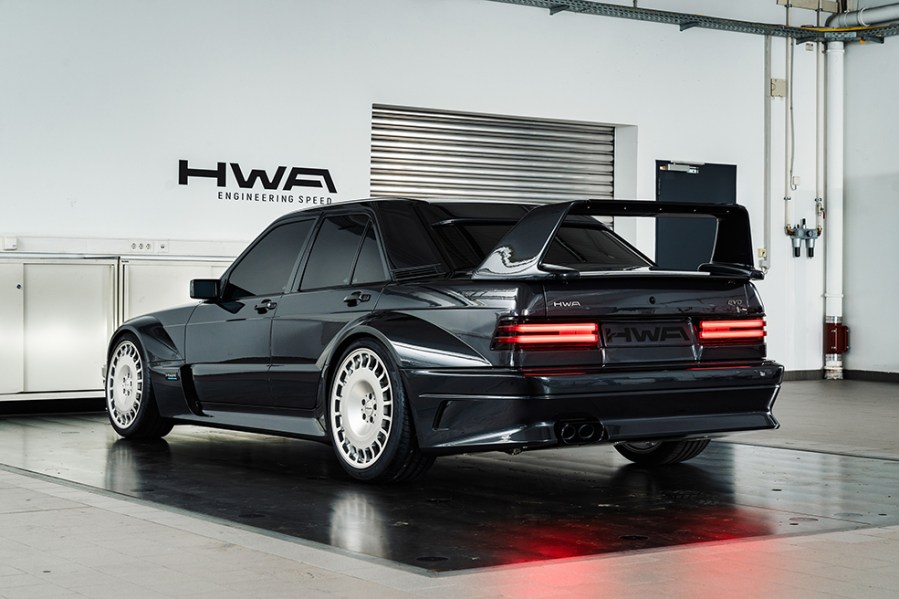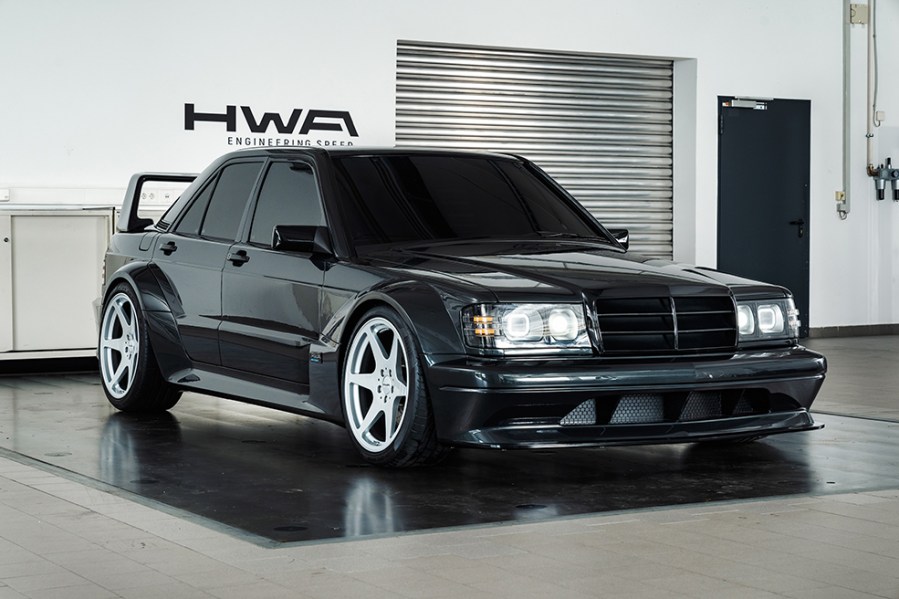The HWA EVO is a V6-powered, all-carbon reimagining of the iconic 190E Cosworth developed by a leading German motorsport outfit
The latest iconic classic to receive the treatment fashionable restomod treatment is the Mercedes 190E 2.5-16 EVO II, with the HWA EVO. Limited to 100 examples, the carbon-fibre-bodied recreation is built on original W201 underpinnings, with the midsection of the donor vehicle’s steel chassis extensively reinforced and new front and rear aluminium chassis assemblies are fitted.
HWA is a German firm that was founded by AMG co-founder Hans Werner Aufrescht when the famous tuner was bought by Mercedes. HWA managed the AMG Mercedes DTM team from 2000 onwards and has since entered cars in Formula 2, Formula 3 and Formula E, as well as providing research and development for an entry in this year’s World Endurance Championship.
The chassis is fully electro-coated for OEM-level anti-corrosion protection, before the all-carbon body is fitted, equating to the car’s 1360kg kerb weight. Unlike the original EVO 2 – which was only offered in ‘metallic Blauschwarz’ blue-black, the HWA EVO is offered in any colour and finish a customer desires, including bespoke liveries.

Inside, modern LED displays recreate the original 190E dials, while all-round Recaro seats are said to blend track-readiness with road comfort. Power comes courtesy of a modern Mercedes 3.0-litre twin-turbo V6, tuned in-house by HWA to produce 450bhp, some 215bhp more than the 1990 original.
Relocating the starter motor, alternator, power steering pump, and air-con compressor to the bell housing at the rear of the engine also grants 50mm fore relocation of the front axle, resulting in perfect 50:50 weight distribution.
A six-speed manual gearbox and rear-wheel drive are said to offer an authentically traditional driving experience, adjustable KW dampers allow drivers to tweak the ride and handling bias towards road or track, and 380mm front and 360mm rear brakes should offer ample stopping power.
The HWA EVO is priced from £605,000 (plus local taxes), with the first units expected to be delivered by the end of 2025.





